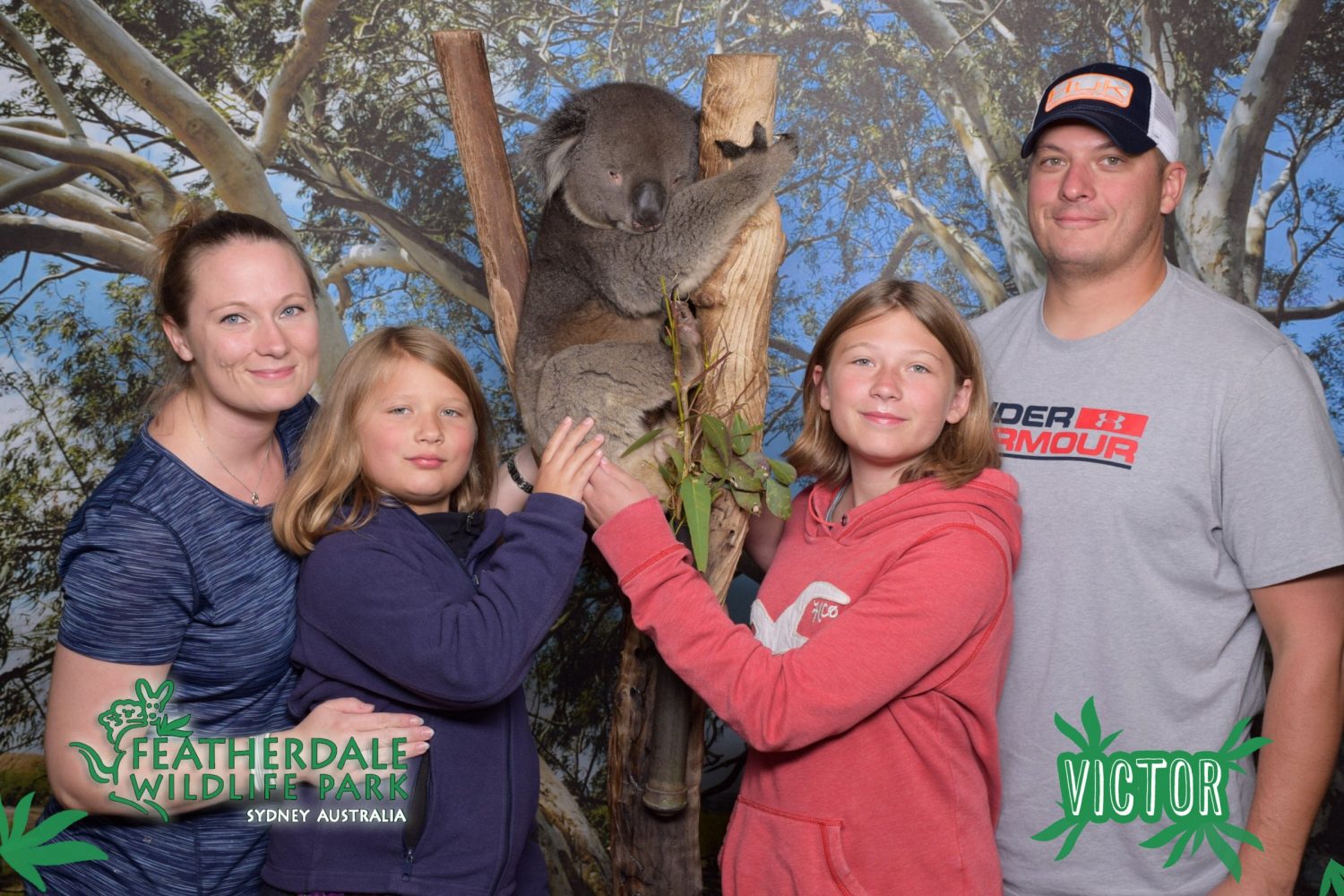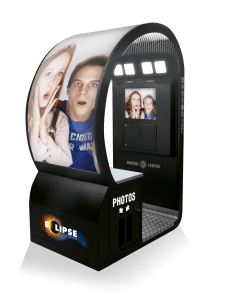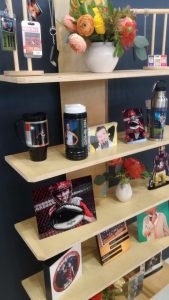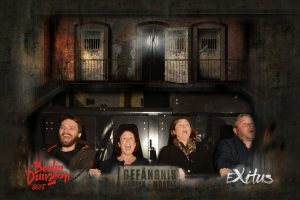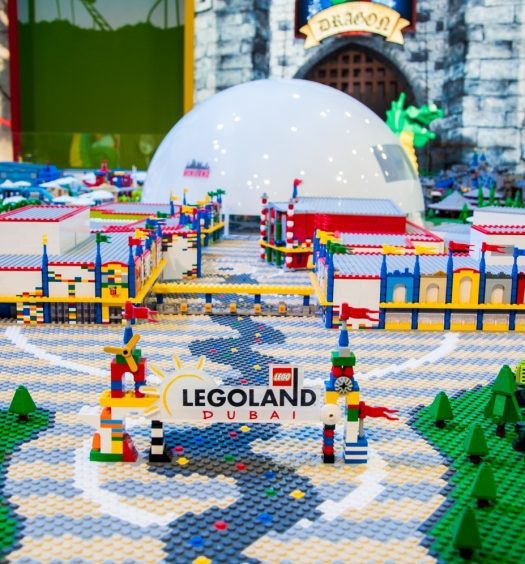Photo systems continue to enhance the guest experience but also offer a key marketing opportunity for operators
IN THESE days of camera phones, digital cameras and other mobile devices that are capable of producing high quality photographs one could be forgiven for thinking that photographic systems in parks and attractions offering images for guests to spend their hard earned cash on might have a tough time of it. After all, why pay for an image when you can take one yourself?
But that is, of course, missing the point somewhat as there is rather more to it than that. Today’s photo systems, produced and supplied by a wide range of companies and operated within a plethora of different attraction venues, offer much more than the opportunity for a quick snap. Sure people will always click away on their phone or tablet and upload anything worth keeping to their social media pages in an instant, but the professional systems available to and utilised by parks naturally provide a totally different opportunity to obtain memorable images, keepsakes, complete records of a day out and so on.
So what are some of the latest technological developments and trends in photo operations for parks and attractions?
“Today’s guests are looking for imaging opportunities and products that they cannot readily get themselves,” says John Barbieri, COO of Picsolve US. “From creative capture technology to one-of-a-kind digital products available instantly for social sharing, we must provide solutions that far exceed their expectations. For instance, we have recently seen a trend in our guests seeking short and shareable video moments.
“In response we deployed our newest capture technology, Super Selfie, thanks to our exclusive partnership with Panora.me. This new capture solution uses multiple cameras and digital stitching to create a truly unique piece of video content that guests simply cannot capture themselves. It starts with a close-up of the guests and dramatically zooms out to reveal the panoramic backdrop behind them. Our newest US installation can be seen in person at the Kennedy Space Centre Visitor Complex.”
“The cost of technology has come down so much that we’re now building photo systems for a fraction of the cost of even 10 years ago,” notes Lynton Barriball, managing director at Digital Photo Industries Pty Ltd. in Australia. “This is allowing smaller attractions to offer photo mementos to their guests, something they may not have been able to cost justify in the past.
“Obviously advancements in camera technology allow us to produce images at a much higher quality than in the past. Image quality has become so much more important in this sector given guests have 4K capability on their phones and likely on their TVs at home.
“Lower component costs also allow us to explore multiple capture points on roller coasters, so guests have a choice of which photo or photos they will purchase. There are some things happening in the area of 3D imaging, on ride video, even augmented reality. I’m not a believer in using technology for technology sake though.”
“The current trends we are seeing in parks and attractions are being driven by technology,” says Oli Biddles, head of marketing – Europe and Middle East at Magic Memories. “Having the ability to share content instantaneously, either through messaging or social platforms, means guests are now actively seeking digital content. In order to support this demand, we have created innovative sharing platforms for guests at attractions across the world.
“Capturing creative and engaging content and enhancing the guest experience continues to be key, so we have also developed the full Guest Experience, using the latest image capture technology to provide guests with a more immersive journey.
“Experience-led engagement will become more main stream over the next three years and we will see technology advancements to drive this. Guests are demanding more personalised, interactive experiences and products that address this need are becoming highly desirable from attractions all over the world. We will also see an accelerated evolution in both the way we provide products and what they are – both physically and digitally.”
“In regards to photo booth operations for park and attractions, Marvel Adventure Lab made its debut at IAAPA in Orlando this past November. It is our answer to technological advancement in photo booths,” states Allen Weisberg, founder and CEO of Apple Industries in the US. “With its licenced Marvel content and Face Place proprietary software it allows the customer to take their photo and turn themselves into a comic strip character. Then the unique software inserts their image into a Marvel Adventure Lab comic or a comic book cover.
“Parks want to be able to offer a digital experience of the whole day existing out of a small movie which can be shared on Instagram or Snapchat,” comments Jan Bijl, director, image+ Digital BV. “The demand for quality photos and good service is very strong.”
“Some of the biggest trends that we observe, and in some cases pioneer, all come down to a shift from printed to digital content,” says Luciano Pessina, manager commercial, TapeMyDay in The Netherlands. “Video has been increasingly dominant over photo on all major social media platforms and this is driving demand for attractions providing video content.
“We have identified several focus-areas, including digital guest identification, use of motion tracking and positional data, high performance digital processing and custom storyboard templating. These items synergise to achieve fully automated capture and delivery, which is absolutely the next horizon for the attractions industry.
“In tandem, TapeMyDay has successfully implemented a lightweight, durable and innovative on-ride camera system. This is not a new, but rather a long-time industry demand which had not yet been fully accomplished.”
Montserrat Canales at photo booth specialist Digital Centre, which has offices in the US and Europe, comments: “LED video wall photo booths are one of the latest technological advances in our sector and have pleasantly surprised users of amusement parks, entertainment centres, bowling alleys, shopping centres, cinemas, FECs, etc. These are photo booths that have the ability to illuminate any place and capture the attention of attendees with their giant external LED video walls, in some cases curved screens over 16ft.
“The players can see their photos shown on the huge LED screens in view of everyone, feeling like the real protagonists and getting their moment of glory. Besides, these screens not only show the photos of the players, they also allow you to publish video ads, to promote other attractions or any product that can be found in the enclosure, as well as to announce discounts or upcoming events. A tool with many possibilities that meets the needs of users and operators.”
And what about the operator’s perspective?
“For me it is adding value for guests and looking at ways to engage them in photos, collecting images that represent their visit and giving them the ability to share and market attractions is a positive message,” says Rupert Hough, games and photography operations director at Merlin Entertainments. “There is always new technology in the industry and different ways of capturing guest images – the more engaging the better and where we can make it an experience that guests remember, this is also an advantage.”
“We live in a world where many of our guests want to share their experience right away on social media,” notes Travis Burke, corporate director at Grupo Dolphin Discovery headquartered in Cancun, Mexico, “so designing our own mobile app and having sufficient cloud storage to allow our guests to download photos immediately after their activity allows them to share and greatly improves guest satisfaction.”
Naturally one might expect photo systems today to be “all about digital” but it turns out that this is not necessarily the case.
“It has been interesting to see the changes in consumer trends over the past 17 years I have been in this industry,” comments Barbieri. “Years ago, the perceived value of a digital print was extremely high, since as consumers we printed almost everything and digital imaging was new to the attraction industry. Now, we have seen almost a complete 180, as the perceived value of prints, especially larger formats like panoramic prints, are significantly higher than digital.
“This is not to say that digital is not important, as we see it included in as high as 90 per cent of packages in major markets. It has become a must-have in most packages and is expected instantly for sharing via social media channels.”
“While delivering a digital copy of the guest image is now a must, we’re also printing more than ever,” says Bariball. “In the consumer space, we’re seeing a revitalisation of personal printing, perhaps partly driven by products like the HP Sprocket, the Kodak Photo Printer Mini and the FujiFilm Instax Instant Film Camera. I go into my daughters’ homes and their book shelves, fridge doors, etc. are packed with their favourite photos of the time.
“There’s also that tactile experience that’s hard to quantify but the guest values. We were all told newspapers, books and magazines would be dead and we’d read everything on our kindle, tablets, etc. I still like to read the paper over a coffee.”
“Digital is certainly a growth market and one that will continue to gain market share – especially as easier ways to deliver content and more exciting products become available for guests to share and treasure,” adds Biddles. “That said, there is still a growing market for print, but this model will go through an evolution of change, with more engaging and personalised products being offered.
“We understand the demand is still there for the right audience, but the importance is on ensuring the right demographic is offered the right product. We have developed our technology to transform our printed products, putting a personalised approach at the heart of the solutions we offer.”
“It is all about the print!” confirms Weisberg. “The print is what makes a photo booth unique. Everyone can take a photo with their phone, but very few people print or even know how to print. In this day and age printing from a photo booth is cool and desirable!”
And Image+ still sees a strong demand for printed photos. “Each year our customers increase their printed sales,” says Bijl. “Digital options are offered throughout. Parks offer mobile apps with an included photo sales part. Image+ offers integration with their API module to access all photos and videos via AWS, Amazon’s Cloud Service.”
“Looking at the breadth of cultures, age categories and attraction types that make up the attraction imaging industries’ target audience, there is certainly still a demand for printed products,” states Pessina. “Some people just prefer to put a framed picture on their mantelpiece. However, prints are no longer the only option or the unquestionable norm. Instead, they are often an accompaniment to the digital product. Digital serves the need of having content available on-the-go, sharing it and producing survivable media.
“Sometimes, the best solution is a combined offering. At TapeMyDay we focus on hybrid solutions like bundles that feature both digital content on a USB as well as a sleeved photo. There are also more innovative options, like receiving your video on a greetings card that begins to play when you open it.”
“Nowadays, both systems are needed,” states Canales. “The printed photo is still a claim and a memory of a fantastic place and of an unforgettable day that we can place on our fridge or simply keep. All Digital Centre photo booths allow the user to customise the photos completely with their owner’s graphics and with the logo of the park or any attraction, for example.
“However, users are accustomed to immediacy, to a world where everything moves fast and they can instantly tell to their friends what they are doing although they live on the other side of the country. That is why we have developed a new platform that allows the user to share the same printed photo through more than eight different social networks and digital platforms.”
“Guest still want a product to take home and a digital photo to share on social media as instant gratification, but as long as the image of the guest is compelling and something they can’t get themselves, then a product whether print, photo frame or print on a Lego brick wall is still desirable,” Hough notes.
“The short answer is digital because we have definitely transitioned from the printed photo or a collection of printed photos posted on the wall for guests to view and choose from, to a CD to USB to use in a mobile application that we developed in house to utilise in the cloud so the guests can download their photos immediately,” explains Burke.
“Having said this it is important to note that there are still some activities where the printed photo brings great value, such as at the end of the flume ride or a log ride or one of our hard rides where the guest perhaps only has one photo available rather than a collection of photos as they do during our dolphin interactive programmes.”
Looking at challenges within the sector, today we all take photos on our mobile devices, so is this any kind of threat to the photo capture sector at parks and attractions?
“For us, it is about capturing the moments guests cannot capture themselves,” Barbieri explains. “With parks banning guests using mobile devices on rides for their safety, we can get a true ‘in the moment’ photo on the most thrilling roller coasters or wildest water rides, whether that be a smile or a scream. Also, thanks to our Green Screen and Experience Wall capture experiences, we can capture guests in the most imaginative backgrounds.”
“We’ve seen very little impact to our traditional in park photography from mobile devices,” Barriball reveals. “When you’re capturing an image the guest can’t take themselves (such as high atop a log flume ride), it’s just as valuable as ever. In some locations we even offer to take a photo for the guest on their own device. The more images we provide that the guest can share via social media and the more they feel like we’re there to help enhance their experience, the better for all.
Bundling also helps. At an animal park in Sydney, guests pay for a personal Koala Interaction. The photo is part of the value we add to that package.”
“People are placing greater importance on not just capturing a moment, but sharing the experience with others,” says Biddles. “But the ubiquity of smartphones isn’t a threat to parks and attractions.
Parks and attractions can build on the consumer appetite to create, share and relive brilliant experiences by capturing guests in the moment throughout their day, in an exciting way.”
“Taking photos with the cell phone has actually raised awareness of the value of a printed photo from a photo booth,” notes Weisberg. “Photo booth usage has substantially increased with the increase of cell phone photos. Shocking but a real phenomenon! People love photo booths and the prints they deliver!”
“A question which always returns,” says Bijl. “I see that our sales are influenced by the fact that the visitors all carry a mobile device. Image+ is able to cope with these effects in two ways – offering high quality photography and an emphasis on photo sessions with special characters.”
Luciano Pessina: “While smartphones will oftentimes not be useable inside attractions for safety reasons, they have become the preferred method for capturing snapshots of family or points of interest while roaming the park. This is because people use what they are accustomed to and because their phone is very accessible. Moreover, the quality of today’s smartphone is beginning to rival that of professional DSLR equipment when post-processing is considered.
“The solution is not to try to limit the use of smartphones, but to embrace it, going above and beyond. If the attraction imaging sector provides sufficiently unique and desirable content, people will always want to spend money to get the most appealing souvenir.”
Canales believes it is about different experiences and results. “Photo booth photos provide things that a selfie with a smartphone cannot offer,” he says. “In the first place, the experience lived inside the photo booth is already a party. Each play is a new experience and the result is a memory that the phones cannot provide. The photos of the photo booth usually have collages and frames customised for each park and include the logo of the location, thus providing a memory of the fantastic day in the park.
“For us, smartphones, far from being a threat, are our greatest allies, because they have allowed us to integrate a new ‘Total Share’ platform in our photo booths that sends customised photos to millions of people through social networks, making our photo booths much more popular.”
And from the operators’ standpoint?
“Our job is to give guests something compelling that they can’t do themselves. Mobile devices can enhance these images but the base image is what we have to provide – both should be working together,” says Hough, while Burke notes: “Rather than a threat this is a great opportunity to challenge ourselves and the industry as a whole to create innovative products that the guest cannot replicate, to create keepsakes that will allow them to share immediately on social media and become part of the show me generation, yet in a way that only we can produce.”
Any form of photo provision can be used as a revenue generator, be it images captured on a ride, in a specific setting, from a photo booth and more, and overall our interviewees concur that the majority of parks will use such systems to provide an additional revenue stream. However, some will also use them to enhance the guest experience, maybe as part of a VIP ticket for example, so it is an adaptable product depending on what the operator is trying to achieve.
The question of whether or not it is better to outsource the operation of photo systems in parks reveals a mixed bag of opinion from our interviewees, however, some believing it is best to leave it to the professionals while others note that with properly trained staff, an in-house operation works perfectly well. Across the Merlin portfolio, they do both.
“It is down to focus,” says Hough. “We have both operating models across the business. Where we have partners operating within the attraction then the key to success is ensuring the partners are included with the commercial teams as much as possible and made to feel like they belong and are part of it. Where this does not happen is when there are more challenges – sometimes it is better to let the experts operate as this is their core focus.”
“This is definitely a challenging question because there are certainly third-party operators that can provide a seamless photo operation for operators that do not have experience or simply do not want to handle that part of their business,” comments Burke. “For us at Dolphin Discovery we handle all of our photo operations in house; it makes sense for us because it allows us to control quality and to have homogenous products between all of our parks in the US, Mexico and Europe.”
So what does the future hold for the image capture sector within the parks and attractions industry?
“This is such an exciting time in our industry,” Barbieri notes. “We have a wide-varying guest demographic visiting our partner’s sites and therefore innovation that fits all guest needs is key. We, as well as the rest of the industry, need to continually invest in new and exciting ways of capturing the moments guests cannot capture themselves. The days of single dimensional photo capture are over and must make way for dynamic capture with unique and innovative products.
“We have seen some incredible new capture technologies enter the industry over the past 24 months and appear to be at the forefront of a digital capture revolution. As we continue to look at the future of the imaging industry, I can’t help but be excited and inspired.”
“I lost both of my parents recently,” reveals Bariball. “The last picture I have of them together has suddenly become so much more important and valuable to me. Some may answer this question by continuing to discuss technology. But if we focus on the value of the photo, the value of the memory, that moment in time never to be repeated, we’ll be on the right track.”
“Magic Memories is extremely excited about the future,” enthuses Biddles. “The demand for new, engaging content is increasing as we speak and will become more main stream across all ages. The way in which guests engage with us will also become more seamless and instantaneous content will become even more accessible.
“As content is becoming highly personalised, more experience-led, interactive opportunities for guests will also grow. Hyper-personalising products through print and digital channels is key.
Building relationships with customers that live longer than the one time park visit is also key to future growth.”
Allen Weisberg: “The future is Print Budii! This is a new Apple Industries product that we debuted at the 2018 IAAPA show. Print Budii is a photo printing kiosk that is powered by an app. Basically, it allows park customers to print their photos from their phone. Each photo can have the park’s logo on it or other types of customised frames.”
“Parks do not want an all-in-one solution anymore for the implementation of photography in the parks,” Bijl observes. “It is not enough to place a photo system in the park and to keep the photo systems running. We have left this period definitely behind us. Image+ has to offer more and more tailor-made solutions in every field like payment solutions and marketing related solutions. Video and photography needs to become more and more integrated into the telling of the story behind the attractions.”
“Video is already showing to be more popular than photos on all major social platforms and this trend will only continue to rise,” says Pessina. “Digital networks are becoming increasingly more fluid and people expect to have the best content available at the touch of a button. Expectations of quality, ease of access and user friendliness will only increase.”
Canales comments: “The photo booth pretends to be another attraction within the amusement park. We try year after year to create new products where the user experience is getting better and they have a lot of fun while also taking a great memory. The goal is to implement new technologies to the photo booths so that they offer everything that a good attraction requires to create the best experience at that moment.”
And the future from the operator’s point of view?
“I am sure the operational model will change within the next 18 months – for example more ticket types including photos to add value but also improve internal revenues,” Hough observes. “Giving guests something they can’t get themselves in a compelling environment will become more of a requirement, while we will need to ensure that where possible we add value for our guests to make it an easy decision to be part of any photo programme.”
“We are definitely excited about the future because, as technology improves and guests have better and better technology at hand, literally, with their iPhones and their mobile devices, it pushes us to innovate the future of the image capture sector,” says Burke. “This will probably involve some 3D modelling, the use of more drones and also a more personal take on where we are capturing that emotion, where we are capturing what the guest received from the experience so that they can share that immediately with their friends and family.”



